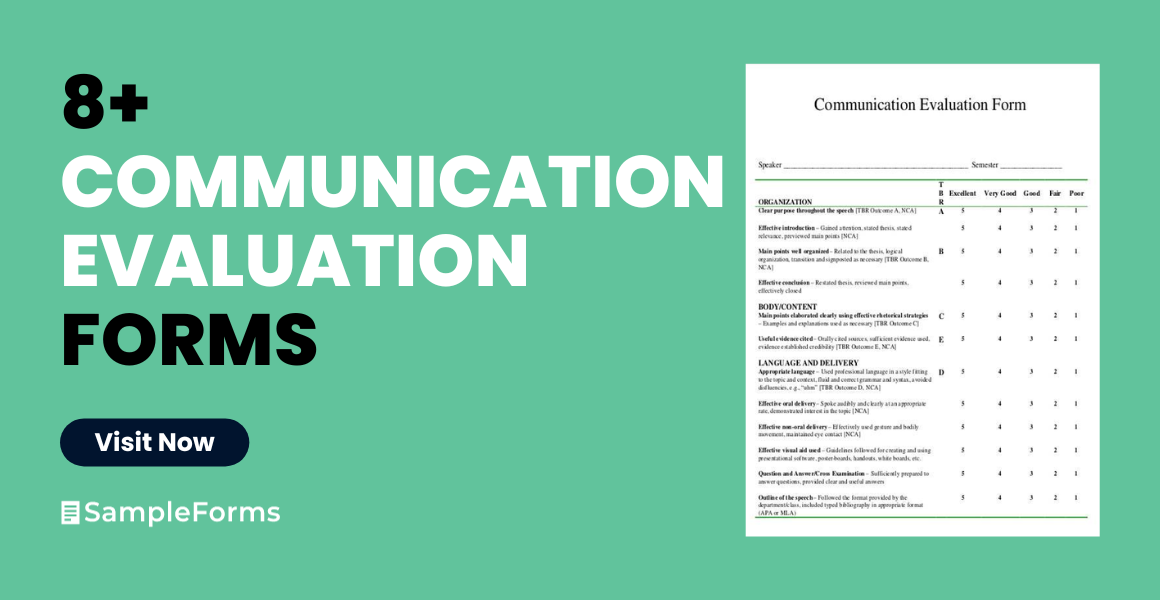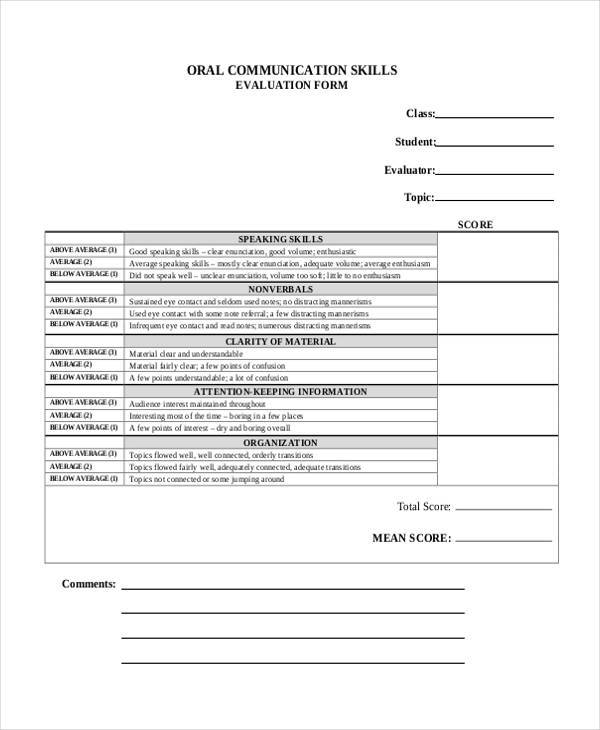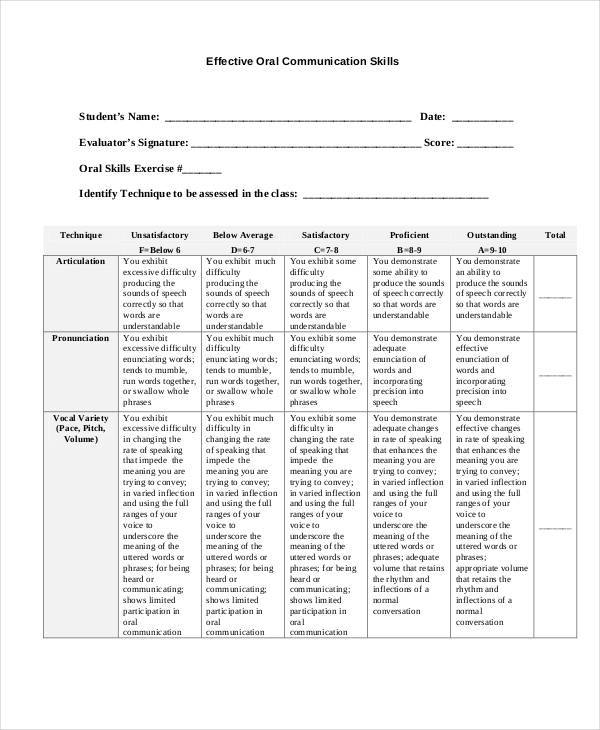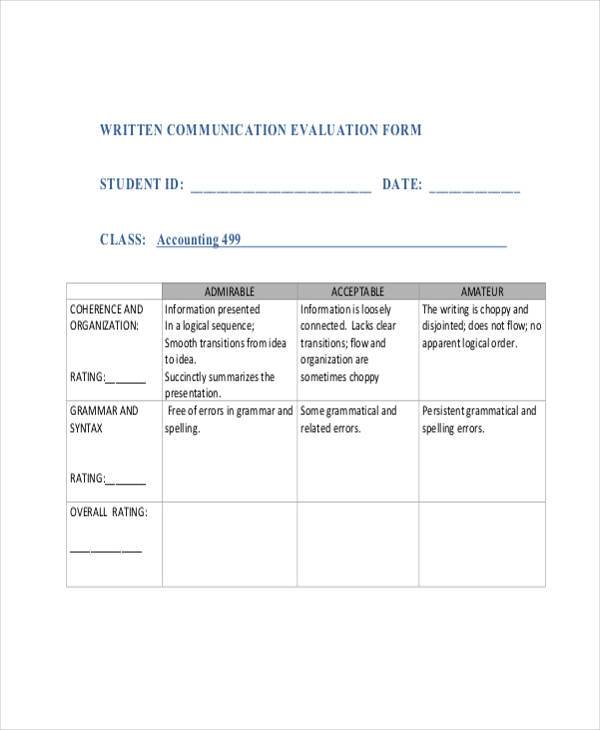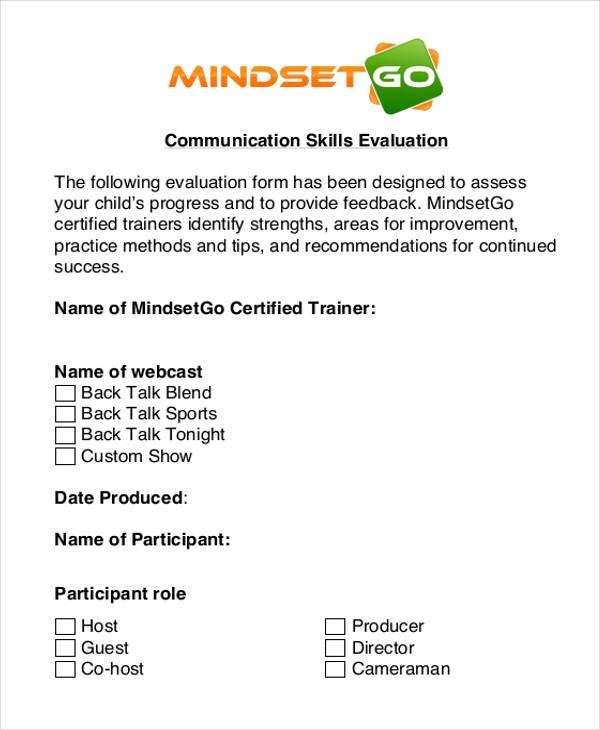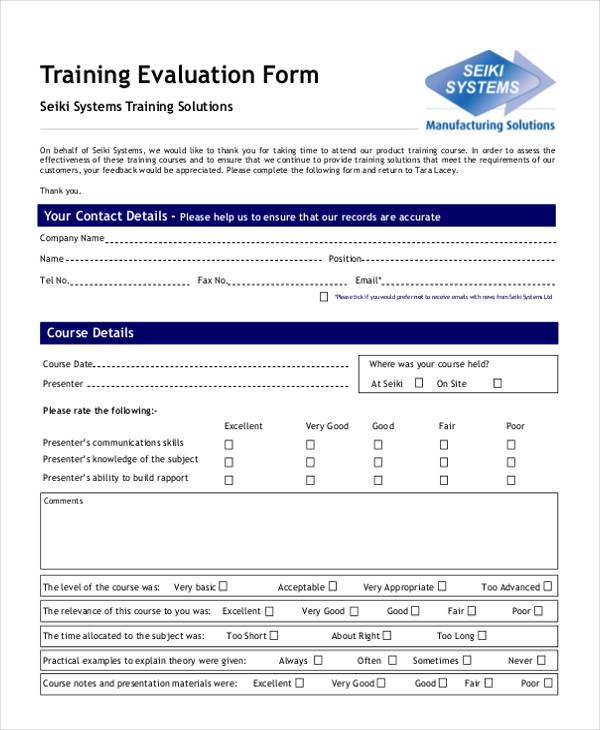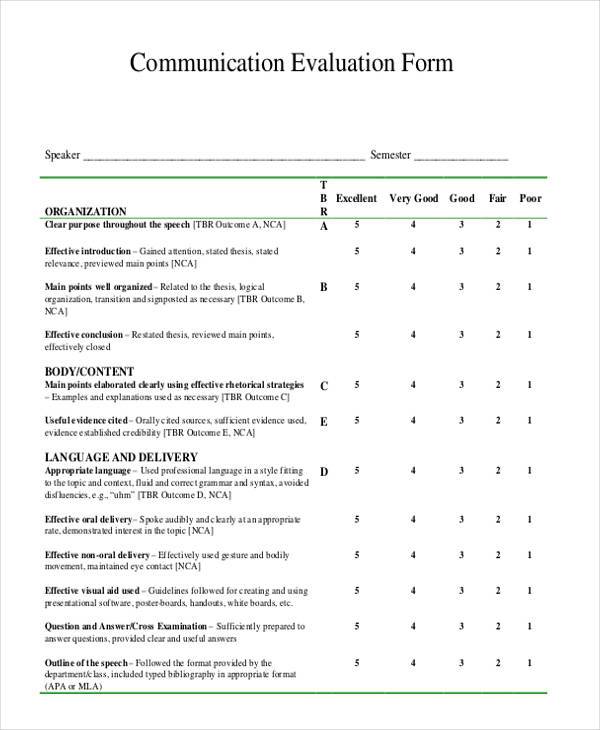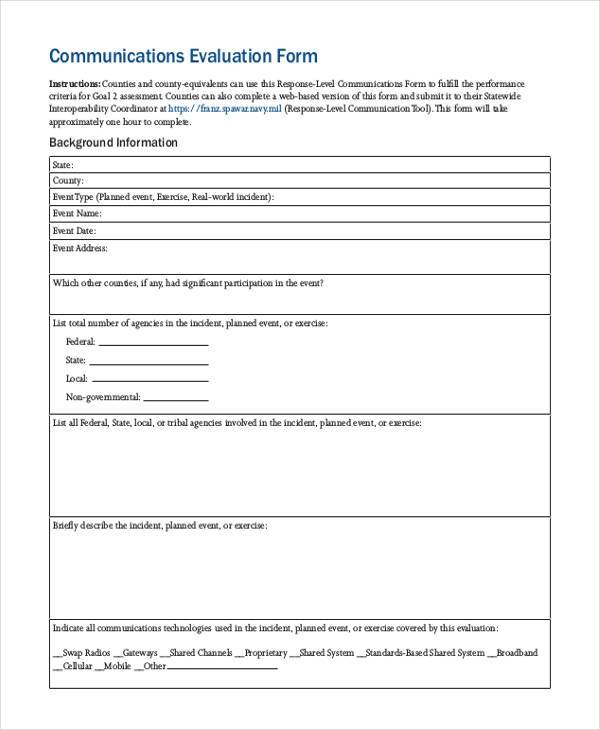Communication is very important. This allows parties to determine what they want and to agree on whether or not things are beneficial to either of them. Communication can form friendships and long-lasting relationships. This is especially useful for those who want to talk business with other companies.
Although, how does one know if this person has the necessary communication skills? How would one know if his communication skills are competent enough to provide the services required for the company?
Communication Evaluation Forms help those who wish to assess just how well one can communicate with others.
Oral Communication Evaluation Form
Effective Communication Evaluation Form
Written Communication Evaluation Form
Communication Skills Evaluation Form
The Different Kinds of Communication Evaluation Forms
There are different forms that help people evaluate just how well their or others’ communication skills are. Here are some examples of these kinds of forms that allow people to do so:
- Communication Teacher Evaluation Forms are forms used by those who are being taught how to communicate properly. These kinds of forms help those people assess the kind of teacher they have and how well they’re educating them in the art of communication.
- Communication Training Evaluation Forms are forms used by the people who undergo communication training either for a job or even a contest.
- Oral Communication Evaluation Forms are the kinds of forms that are used to assess how well a person speaks by giving them multiple tests, such as talking about certain topics or convincing someone to buy a certain product.
- Written Communication Evaluation Forms are used to see how well a person can use the art of writing in communicating with others. They are put through multiple tests to see how far their writing skills go and how well they can convince others through writing.
- Communication Skills Evaluation Forms are used by companies to see how polished an applicant’s communication skills are. These are usually used by those who are applying for a Customer Service Representative position at a company.
Communication Plan Evaluation Form
Communication Training Evaluation Form Sample
Communication Evaluation Form Example
Generic Communication Evaluation Form
General Communication Evaluation Form
The Importance of Evaluating Your Communication Skills
A person needs to know just how well he can communicate with others. That person can take up classes to improve his or her communication skills and once they’re done, the teachers can use Student Evaluation Forms to assess how much a student’s communication skills are improving, if it’s even improving at all.
If you know how to communicate, then this could set you up with potential business partners who will benefit you and your company for a good long time. This kind of skill can even help those who take the entrepreneurial route and help sell whatever product it is they want to offer to their customers.
If you know how to convince others with your words or even with your writing, then it’s guaranteed that you’ll make it in life and so will your business.
